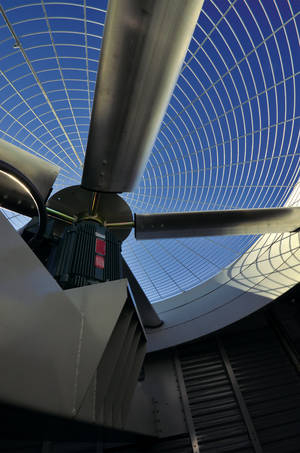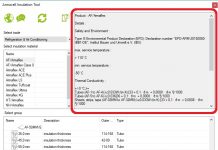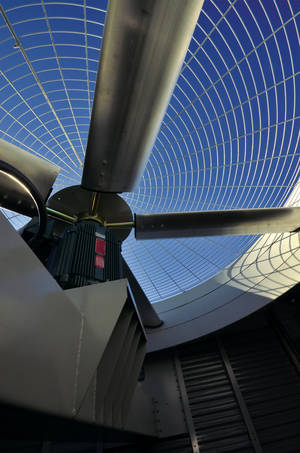 A variable frequency drive (VFD) often is specified to reduce operational cost for pumps, fans, compressors, or any similar equipment with variable load profiles that may be found in a typical building. Here’s how to specify a VFD to meet load conditions while achieving efficiency.
A variable frequency drive (VFD) often is specified to reduce operational cost for pumps, fans, compressors, or any similar equipment with variable load profiles that may be found in a typical building. Here’s how to specify a VFD to meet load conditions while achieving efficiency.
Motors get no respect. Although they’re present in many of the systems that we design and they often drive the overall energy usage profile of a building, they usually end up as an afterthought. Traditionally, mechanical, electrical, plumbing (MEP), and fire protection designs for buildings have been focused on system level considerations of health/safety, functionality, and initial capital cost. However, the adoption of more stringent energy codes and standards has put greater emphasis on energy efficiency in our designs.
While this emphasis on energy efficiency may seem like a relatively recent development, it is the direct evolution of federal legislation that was passed almost 40 years ago in response to the 1973-74 oil crisis. The key is to recognize that this is all part of an ongoing progression and that efficiency requirements will only become more stringent. So while many building owners will be more than satisfied with minimal code-compliant designs, as proactive engineers and designers, there is a need to understand how the components in the systems we design use power and how they can be optimized without compromising those traditional design values. In some cases, there may be technological “dead ends” in the individual system components that may require emphasis on different solutions for energy efficiency.
Motors are everywhere
In most design methodologies, you look for the “bang for the buck”—high-impact, low-cost solutions first. The question is, what uses the most electricity in our designs? Although we may not think of motors specifically when considering the energy use of any particular building system, the electrical usage associated with motors is „hidden” in most commercial building energy use categories.
From a broader perspective, electric motor driven systems represent more than a third of the total electricity demand for the United States and between 43% and 46% globally per statistics from the International Energy Agency. Total motor energy usage for the industrial sector outstrips commercial usage by roughly 3:1. Of total power used by motors worldwide, approximately 68% is used by medium-sized motors from 1 to 500 hp, which covers the vast majority of motors used in building systems.
A business concept known as „disruptive innovation” describes an innovation that redefines or replaces a market by offering improved simplicity, functionality, and affordability. They typically are not breakthrough innovations—in fact, they existed in niche markets prior to widespread acceptance. This concept could be applied to the emergence of variable frequency drives (VFDs) and permanent magnetic ac (PMAC) motors for use in building systems. VFDs have been used for a significant amount of time in situations where controllability was as much a driving factor as energy savings, such as in variable air volume (VAV) air handling systems. However, energy codes, such as ASHRAE Standard 90.1: Energy Standard for Buildings Except Low-Rise Residential Buildings and the International Energy Conservation Code (IECC), have redefined design priorities by emphasizing energy-saving aspects of their use. This emphasis only becomes more pronounced with improvements to the baseline energy model in each code revision cycle. The commercial baseline model in ASHRAE Standard 90.1-2010 (IECC-2012) represents a 30% improvement over ASHRAE 90.1-2004 (IECC-2006). The 2013/2015 code update is expected to produce an additional 8.7% energy cost improvement.
The federal government has acted as the primary catalyst for this emphasis on energy. The Energy Policy and Conservation Act of 1975 (EPCA-1975), with subsequent major amendments by the Energy Policy Act of 1992 (EPAct-1992) and the Energy Independence and Security Act of 2007 (EISA-2007), has given the Dept. of Energy wide-ranging power in mandating energy efficiency standards. While federally mandating energy efficiency may sound intrusive on the surface, the process of adopting new standards does have a reasonable set of formal evaluation criteria, many of which are readily applicable to engineering design. The seven criteria based on EPCA legislation are:
- Economic impact on manufacturers and consumers: Will implementing the standard cause unusual hardship for manufacturers or consumers? Is the initial first cost of implementation affordable?
- Lifetime operating cost savings compared to increased cost for the product: What is the payback period? What is the lifecycle cost analysis?
- Energy savings resulting from implementation: Quantify the magnitude of energy savings if implemented; a national-level consideration.
- Lessening of utility or performance of products: Given the function, is this a misapplication of the technology? Am I attempting to tow a trailer with a Ferrari?
- Impact of any lessening of competition: Is this simply adopting typical „best in class” products or something proprietary that could cause a monopoly?
- Need for national energy conservation: Again, a national-level consideration. Will the standard provide improvements to the security and reliability of the nation’s energy system?
- Other factors that the Secretary of Energy considers relevant: General considerations include environmental and employment impact to the country. Will emergence of new technology foster job growth? What is the value of emissions reduction?
Economically, any proposed standard that can demonstrate payback in 3 years is fair game for federal adoption under the authority of the EPCA legislation.
While the development process for motor efficiency standards can seem glacial at times, still we are often caught off guard by the changes that show up in the energy codes. For example, while minimum motor efficiency requirements are just beginning to appear in IECC 2015, they are the result of legislation passed nearly 8 years ago. If we were to examine the progression from legislation to final adoption, it may seem needlessly convoluted. Nevertheless, remember that the effectiveness of the end product hinges on the creation of a universally accepted standard. Standards require robust, repeatable test procedures to be effective. You can’t quantify energy savings when you can’t measure something consistently.
For example, the motor efficiency tables in IECC 2015 are the indirect result of the EISA-2007 legislation. This legislation drove the expansion of the motor industry’s minimum efficiency levels that are reflected in the NEMA MG 1-2011 motor standard for manufacturers. This manufacturer’s standard parallels changes in 2012 to the federal mandated test standards defined in 10 CFR Part 431. These standards, which are just beginning to show up in IECC-2015, won’t be adopted by most states until 2016.
Source: John Yoon, CSE








































































